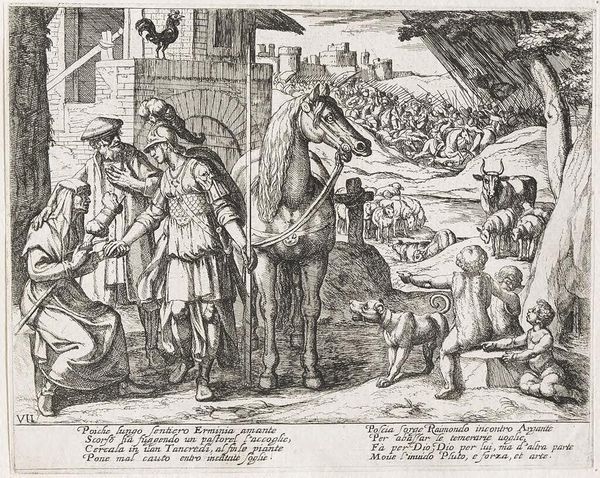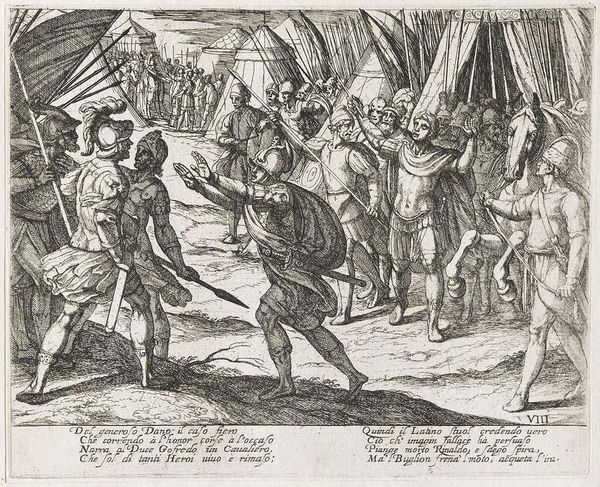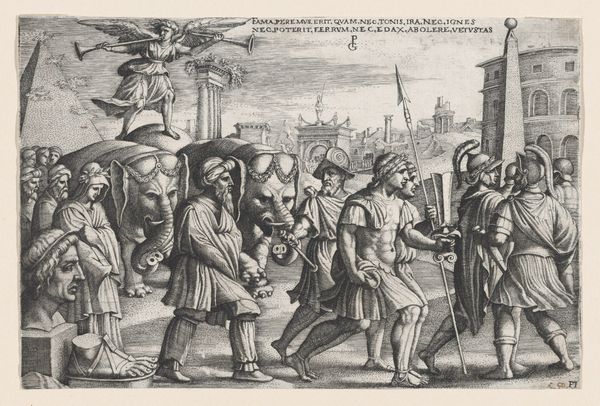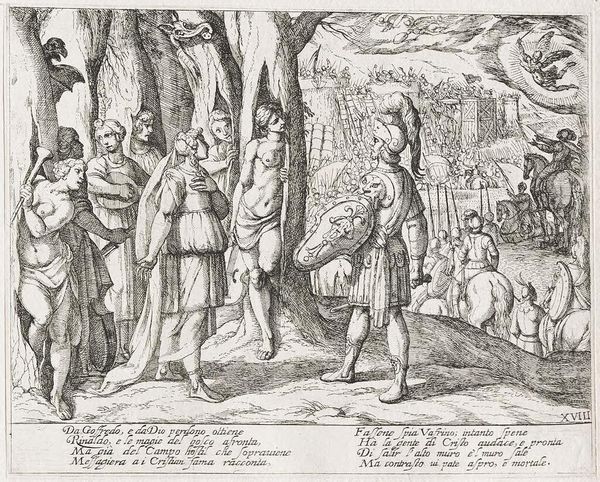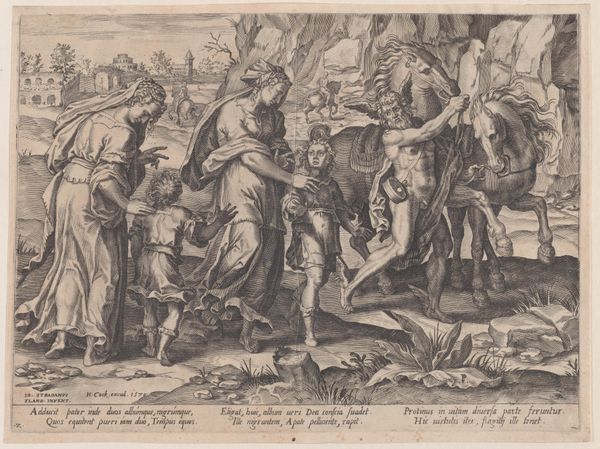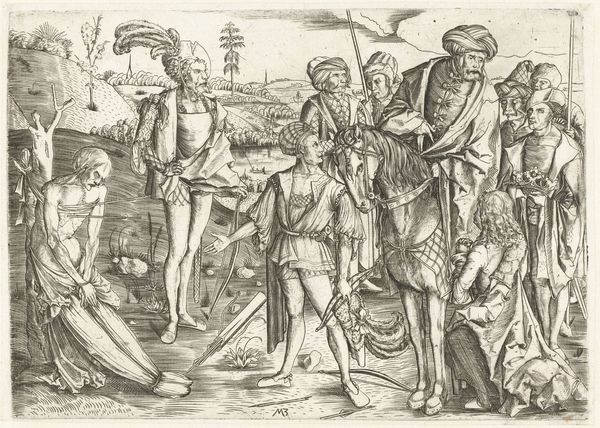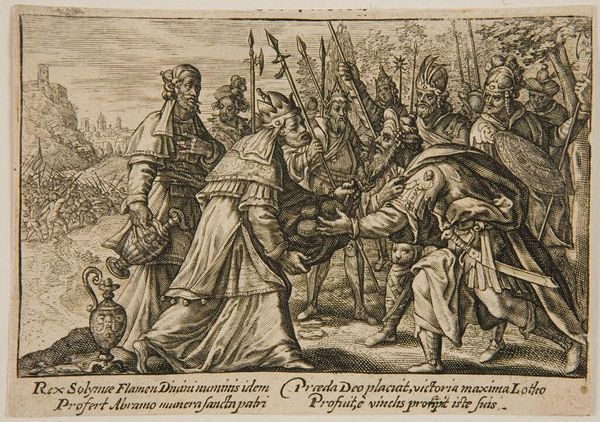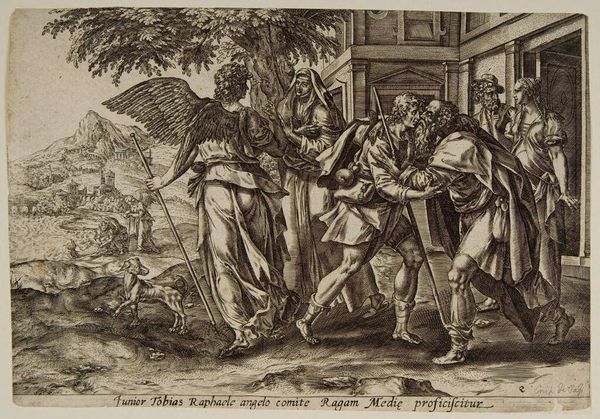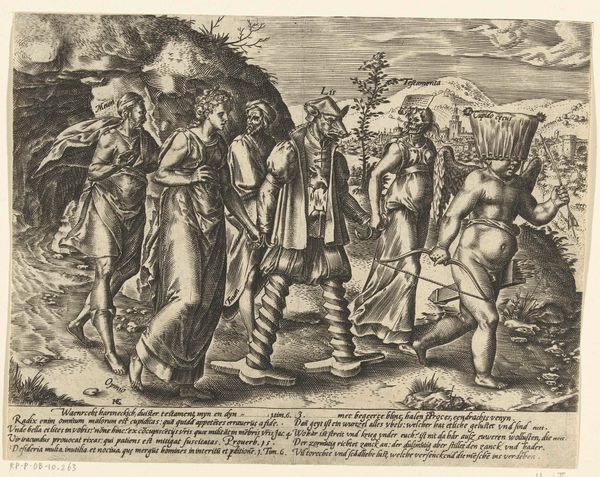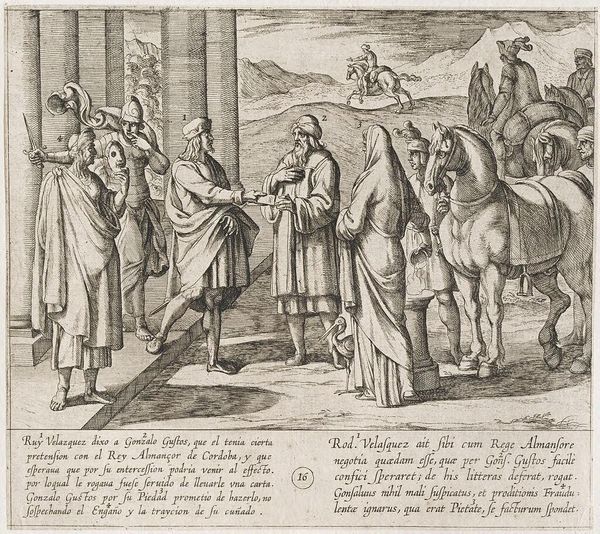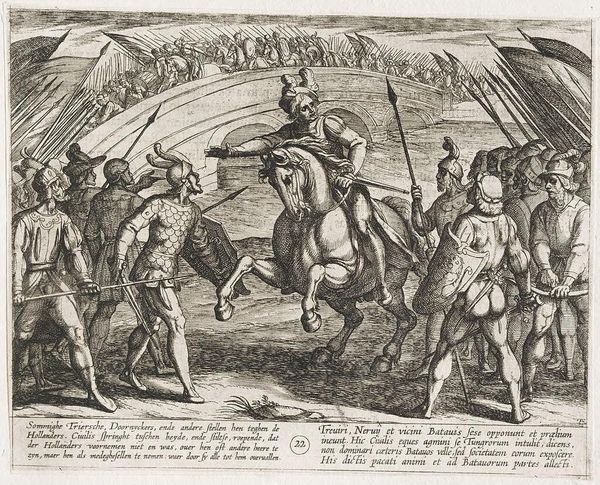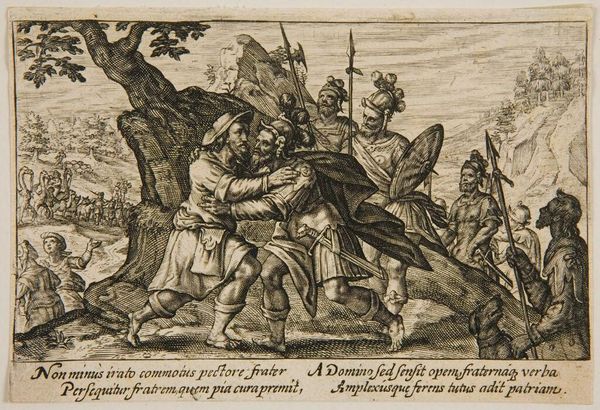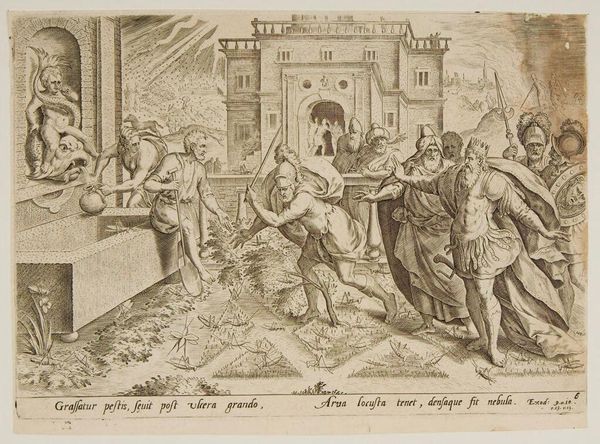
Dimensions: 13.6 Ã 20.5 cm (5 3/8 Ã 8 1/16 in.)
Copyright: CC0 1.0
Editor: Here we have Georg Pencz's "Triumph of Fame," undated, a print from the Harvard Art Museums. It depicts what seems to be a triumphal procession, a bit crowded, but full of symbolic imagery. What do you see in this piece, particularly regarding its cultural context? Curator: Pencz's print speaks volumes about the cultural aspirations of the 16th century. Triumphal processions, popularized in ancient Rome, were revived during the Renaissance to celebrate power and virtue. The diverse figures suggest the expansive reach of Fame, but the elephants really underscore the exoticism and power associated with the concept of triumph. How do you think this image would have functioned for its original audience? Editor: I guess it might reinforce the social hierarchy, reminding viewers of the power structures at play? Curator: Precisely. It’s a carefully constructed image that, while seemingly celebrating a universal concept like "Fame", simultaneously reinforces specific, culturally-defined power dynamics and values. This visual language of triumph served to legitimize authority and perpetuate certain socio-political ideals. We can learn so much from these images.
Comments
No comments
Be the first to comment and join the conversation on the ultimate creative platform.
